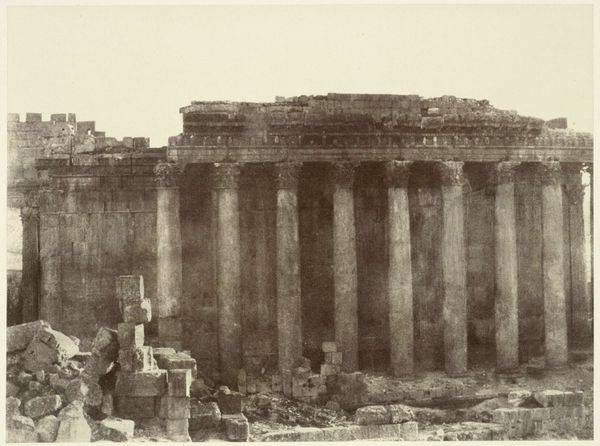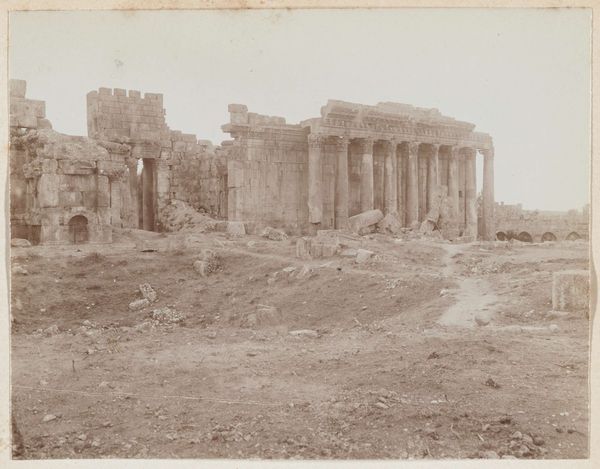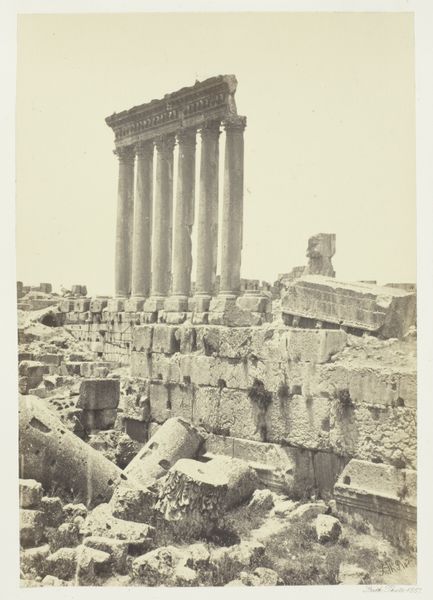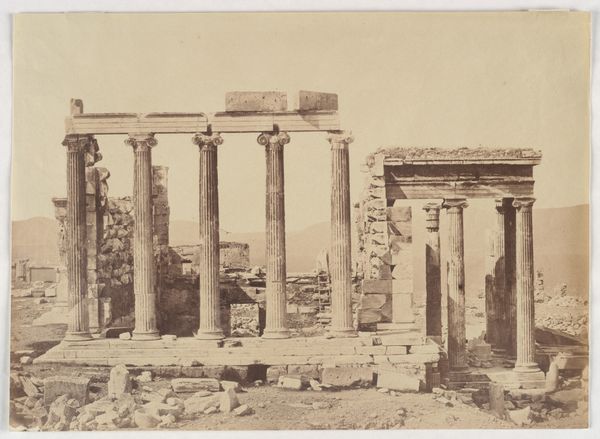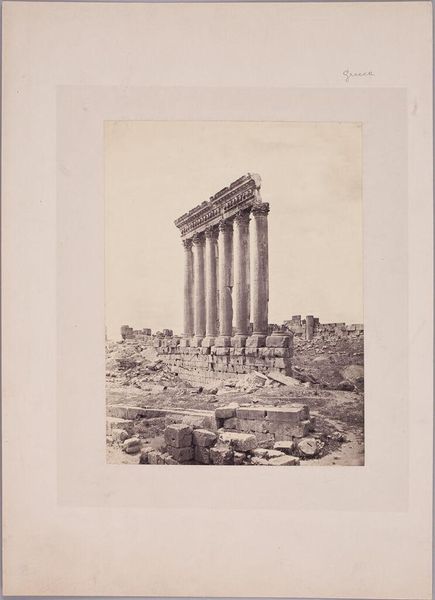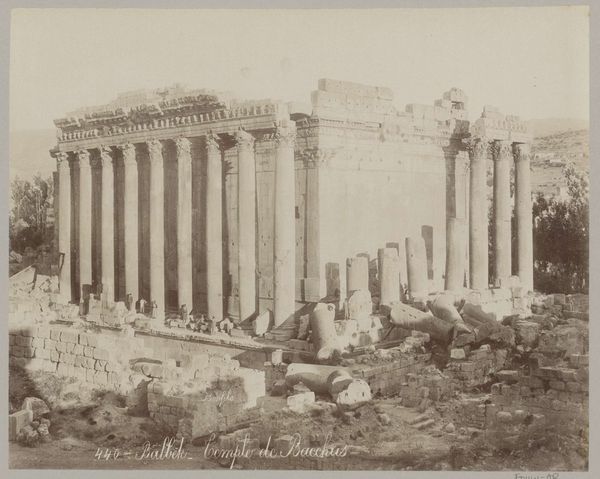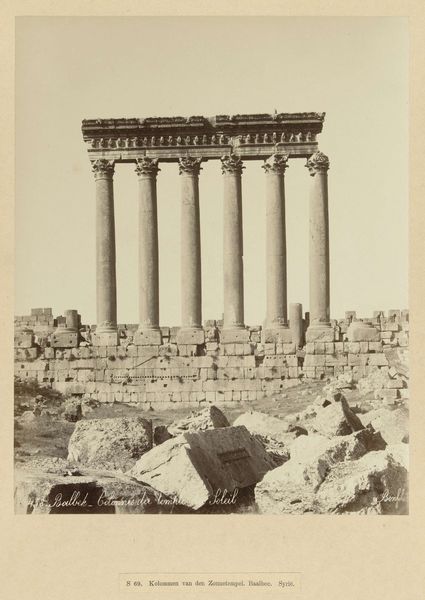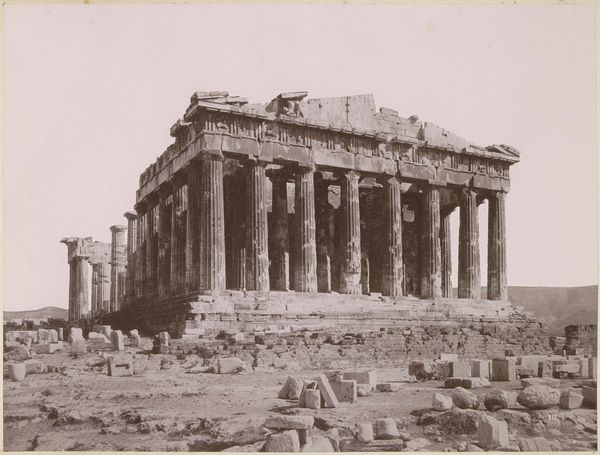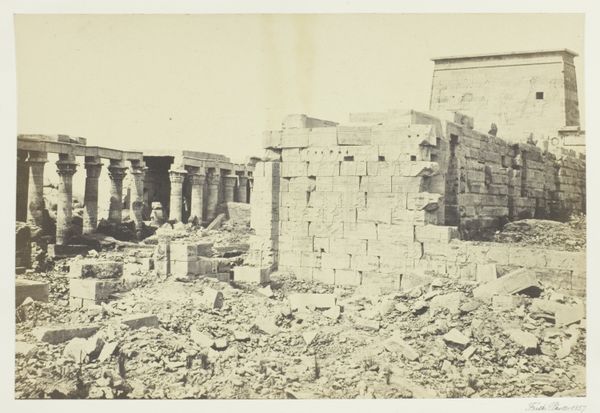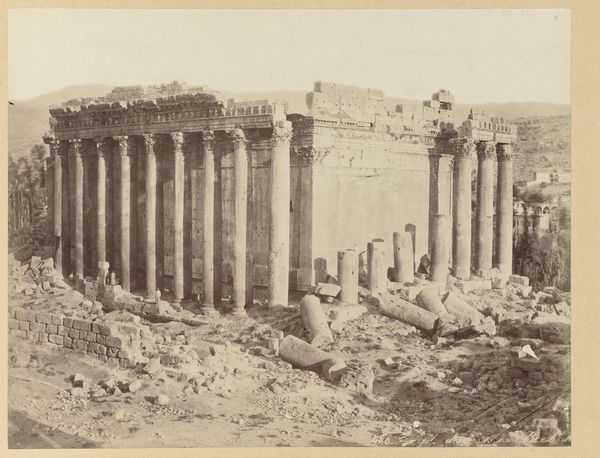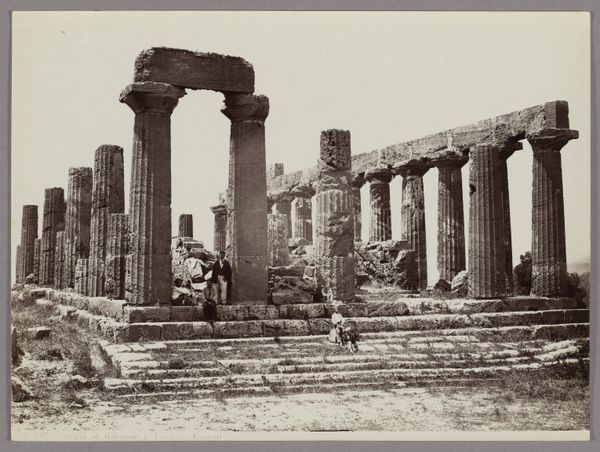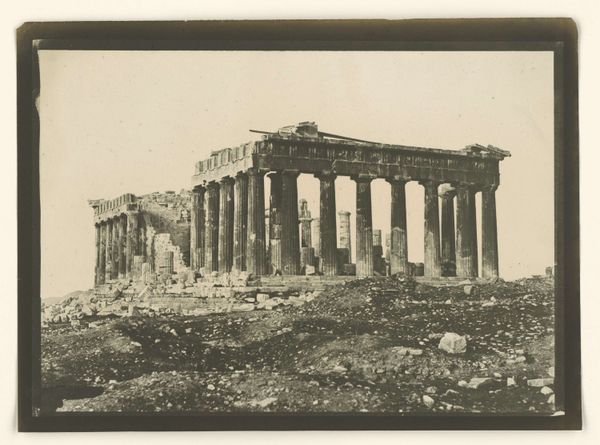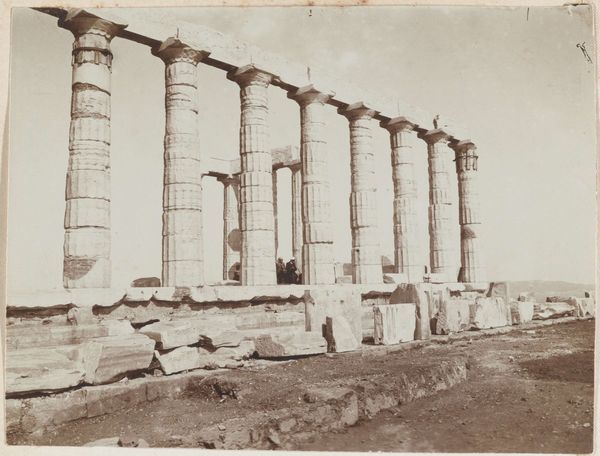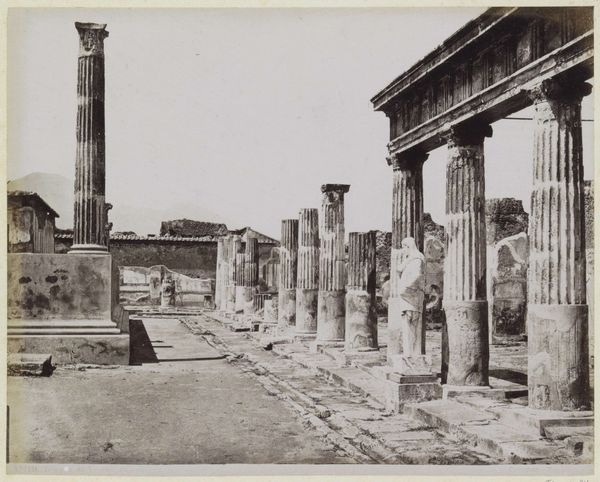
tempera, print, metal, photography, site-specific, gelatin-silver-print, marble
#
tempera
# print
#
metal
#
sculpture
#
landscape
#
classical-realism
#
outdoor photograph
#
photography
#
ancient-mediterranean
#
site-specific
#
gelatin-silver-print
#
history-painting
#
marble
Dimensions: height 254 mm, width 557 mm
Copyright: Rijks Museum: Open Domain
This is Gustave Le Gray’s photographic print of the Temple Ruins in Baalbek, Lebanon. In mid-nineteenth century France, photography was a relatively new medium, still finding its place within the established art world. Le Gray, and others, saw photography as a means to emulate painting, and to offer something of the same aesthetic and cultural value. This image, made sometime in the 1850s, is interesting for the way it presents the ‘Orient’ as a site of memory and history. Consider how the grandeur of the temple ruins speaks to the decline of once-great empires. At this time, photography was often used as a tool of colonial expansion, documenting and classifying the people and places encountered. However, Le Gray’s image is more than a mere document; it’s a romantic vision of the past, inviting viewers to contemplate the passage of time and the impermanence of human achievement. To understand this work better, we can look at travel literature, colonial records, and the history of photography itself. Ultimately, this image reminds us that art is always shaped by the social and institutional context in which it is made and viewed.
Comments
rijksmuseum about 2 years ago
⋮
Around 1860 Le Gray resided at the court of a Lebanese sheikh as a drawing instructor. He captured this historical site and the ancient temple ruins. In order to take a sweeping panoramic photograph, he mounted two paper negatives together, as is the case here. The Roman emperor Trajan once visited this place, where he raised a temple dedicated to Jupiter.
Join the conversation
Join millions of artists and users on Artera today and experience the ultimate creative platform.
